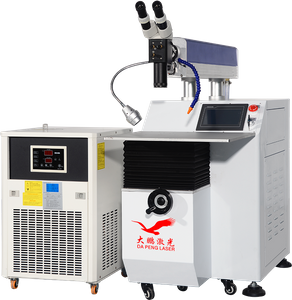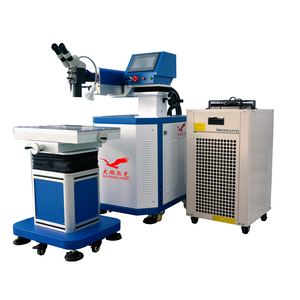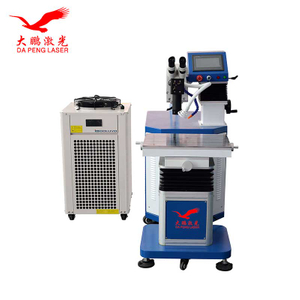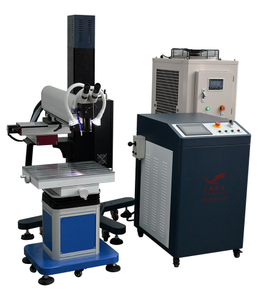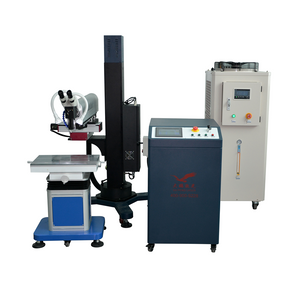1. Product Overview

1.1 Summary
Laser welding is a cutting-edge technology in laser material processing, specialized in welding thin-walled components and precision parts. It uses a heat conduction welding method, where laser radiation heats the workpiece surface and thermal energy penetrates the material via conduction.
By precisely controlling parameters such as pulse duration, energy intensity, peak power, and repetition rate, it forms controlled molten pools for:
Spot welding
Butt welding
Lap welding
Seal welding
Advantages of this process:
High depth-to-width ratio, narrow weld seams
Minimal heat-affected zone and deformation
Fast operation with smooth weld surfaces
Post-welding maintenance-free or low-maintenance
Focused light beams and high positioning accuracy
Seamless integration into automated workflows
1.2 Main Technical Features
Stable and uniform laser spot after fiber transmission improves weld quality
Small focused spot with high power density, optimized for mold repair
Special chiller ensures stable long-term high-power welding
Gas protection system maintains product color and weld quality with argon protection
Double-joint boom with swivel casters and three-axis rocker arm allows flexible movement without moving the mold
360° laser head rotation and electric lift enable welding on all sides
Dedicated welding control system with LCD touchscreen: easy to operate and learn
Expandable system compatible with automation devices such as production lines, photoelectric detectors, and pneumatic fixtures
1.3 Advantages Over Traditional Pulse Mold Welding
No consumables (no tubes), maintenance-free
Lower average power consumption
Wider melting range (e.g., stainless steel 0.1–1.0 mm), laser stable without beam wandering
Special chiller ensures long-term high-power welding stability
Objective lens water cooling protects optics during extended use
Deep, firm welds, fully melted, no air holes or sand holes, aesthetically pleasing repair
1.4 Product Models and Technical Parameters
| Parameter | QCW-150W-XB | QCW-300W-XB |
| Maximum laser power | 1500 W | 3000 W |
| Laser type | Fiber laser | Fiber laser |
| Wavelength | 1080 ±5 nm | 1080 ±5 nm |
| Work pattern | QCW | QCW |
| Maximum adjustment frequency | 25 Hz (customizable) | 25 Hz (customizable) |
| Laser welding depth | ≤2.0 mm (depending on material) | ≤3.0 mm (depending on material) |
| Fiber core diameter | 20–200 μm & DOE | 20–200 μm & DOE |
| Fiber length | 6 m (customizable) | 6 m (customizable) |
| Light output mode | QCW | QCW |
| Positioning system | Microscope | Microscope |
| Rated power | 3.3 kW | 4.2 kW |
| Cooling method | Water cooling | Water cooling |
| Power requirement | 220V ±10%, 50Hz / 40A | 220V ±10%, 50Hz / 40A |
| Dimensions (L×W×H) | 1380×1000×1240 mm | 1380×1000×1240 mm |
| Net weight | 295 kg | 295 kg |
1.5 Workplace Requirements
Ambient temperature: 5–35°C (air conditioning recommended)
Humidity: 40–80%, no condensation (dehumidifier recommended)
Power supply fluctuation: <5%; use voltage stabilizer if >5%
Foundation vibration: amplitude <50 μm, acceleration <0.05 g; avoid large stamping machines
Air pressure: 86–106 kPa
Avoid strong electromagnetic interference, radio transmitters nearby
Workspace: smoke-free and dust-free; avoid environments with metal polishing dust
Anti-static measures: optional static shielding, grounded equipment
Cooling water: add antifreeze if ambient <0°C; drain water when machine stops
1.6 Machine Structure and Working Principle
The laser welding machine consists of:
Laser power supply
Optical system
Cooling system
3D worktable
It emits 1080 nm pulsed laser through fiber optics, which is transmitted, expanded, and focused on the workpiece. Microcontroller-controlled pulse frequency and width regulate laser power and energy delivery.
Advantages of QCW fiber laser:
High electro-optical conversion efficiency
Compact structure, maintenance-free
Flexible fiber output for small diameter soldering
Simple wiring and operation via LCD
High-precision QBH fiber; optional 10 m fiber
External communication for monitoring and centralized management




2. Main Components (Chapter 3 Preview)
QCW Fiber Laser
Safety Features: Class IV laser, 1080 nm, OD≥5 protection goggles required
Operation Tips: check cables, connectors, and grounding before powering on
Avoid flammable substances and ensure ventilation
























